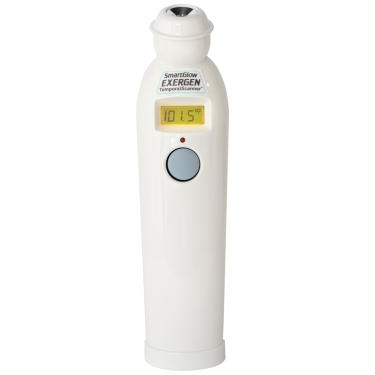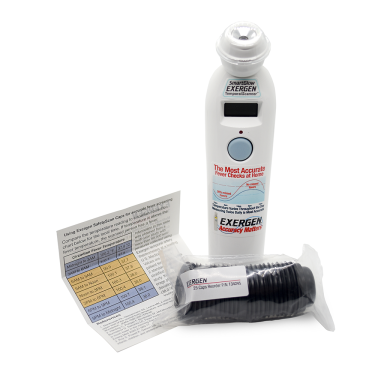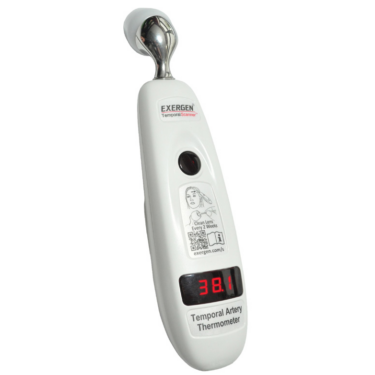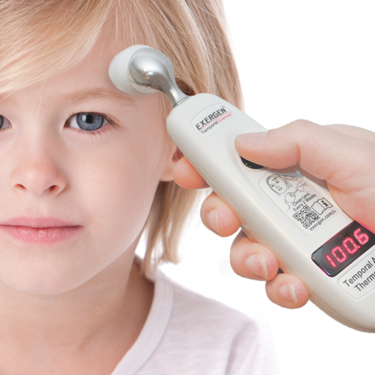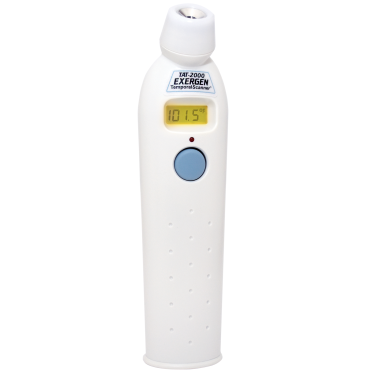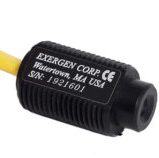Chapmanville, West Virginia resident Lee Rayburn and his teammates have been involved in amateur stock car racing for more than two decades, at first competing in the US Legend Cars races. Two years ago, the team, known as Sniper Motorsport, shifted gears and moved to larger NASCAR Limited Late Model Stock Cars. Rayburn, a civil engineer, knew that some racers used data acquisition systems to improve their results, and wanted to design a solution that would allow him to acquire the tire temperature data needed to optimize camber and improve corner speeds. He and his teammates had no experience with the systems, and given the competitive nature of car racing, others weren’t likely to share their knowledge, so Rayburn set out to learn more on his own.
After some preliminary research, Rayburn purchased a used Racepak data acquisition system. While picking up the system, he noticed the seller had a bracket with thermal sensors that could read tire temperatures in his warehouse, so asked if he could also purchase the sensors. When the seller declined, Rayburn continued his journey, this time conducting research on thermal sensors. He found the Exergen Installation Guide: Technote #13, which describes how to use Exergen thermal sensors to measure tire temps.
Rayburn wanted to measure temperatures at the outside, inside and middle of each front tire and discovered that Exergen’s IRt/c.01-J-240F non-contact sensors were ideally suited to his goals. The sensors are sized only 1.28” x .71” Dia., have mean-time-between-failure (MTBF) rates of a thousand years, and have no active electronics, so essentially can never fail. The team’s race car’s tire temperatures range from 180 °F during the Fall to 250 °F during Summer months, and data is constantly changing, but the Exergen sensors– with a temperature range of 180 °F to 250 °F and response times between 50 and 150 milliseconds –were more than up to the task.
Rayburn then moved on to the next hurdle in designing his system: finding a means to transfer the IRt/c’s signal to the data acquisition box. On e-bay, he found a thermocouple-specific amplifier board manufactured by Playing with Fusion. The board, measuring approximately 2”x3”, amplified the sensors’ signals from 22 uV/C to 5 mV/C, and provided all the power he needed.
Although Exergen sensors can reach very high-performance levels, they may be limited in doing so because of environmental constraints. However, a unique methodology developed by Exergen, called Sensoranics, can be used to augment the performance of its technology by using mechanical add-ons to remove the constraints. Rayburn did just that by designing his own system that employed the sensors.
The engineer affixed three Exergen sensors to each of two 36” long 1” square tubing brackets he’d fashioned from aluminum. He mounted the brackets on the car’s spindles, so they follow the tire as the wheel is turned. (Many other designs mount the thermal sensors to the body work, resulting in a solution that reads accurately only when the wheel is straight, not while turned.) Rayburn attached the amplifier, which is housed in its own enclosure, and the Universal Sensor Module USM to the car’s chassis tubes next to each spindle and tire.
He designed the system to allow the tire temperature signal to move from the Irt/c’s into the amplifier, and out to Racepak’s Universal Sensor Module (which allows 4 0-5V signals to be wired in). From the USM, the signal moved to Racepak’s data acquisition box, and finally to Racepak’s software (DataLinkII).
In one of the early test-runs with the system, some flying gravel damaged a sensor, so Rayburn set out to improve the design. In his second iteration, he opted to shield the sensors with sheaths– a solution that has worked quite well. He also increased the distance from the tire to the sensors by adding 1.5” of tubing to the bracket. The weld on that bracket was a casualty to vibrations; so, on his third iteration, he remade the bracket with extra length and added an option to remove it from the spindle when it’s not in use to prolong its lifespan. Thus far, he’s used this version of the system on three separate test dates with 10 test sessions on each date.
Rayburn and his teammates report that the data from the sensors has helped them significantly improve their lap times. “It’s amazing how much insight the sensors provide,” says Rayburn. “The data allows pinpoint camber adjustments, and with each change you can see the lap improvements. The procurement of the sensor and amplifier and all the thought that went into it was well worth it.”
